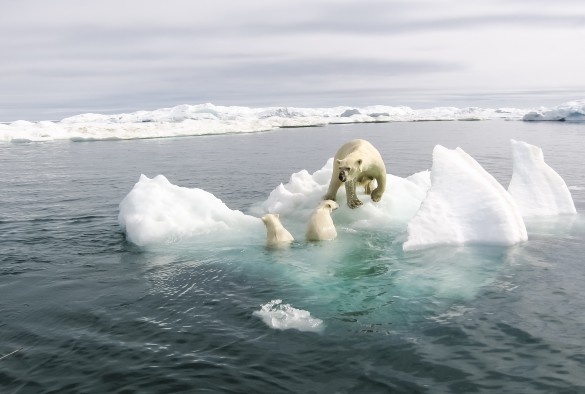
A new discussion paper co-authored by University of Liverpool glaciologist Dr James Lea explains why a UK Arctic science strategy is integral to understanding how global warming will change the Arctic and affect the UK.
The Arctic and the UK: climate, research and engagement paper explains how the UK’s weather is linked to conditions in the Arctic. For example, high atmospheric pressure in the Nordic Seas diverts damaging storms across the UK and mainland Europe, with the potential to cause societal disruption from flooding.
Dr James Lea, Senior Lecturer in Glaciology said: “This paper will help the public, policymakers and stakeholders understand that what goes on in the Arctic has very real impacts on life in the UK, whether it be extreme weather, the fisheries that provide us with seafood, or our future shipping routes as Arctic sea ice continues to recede. The UK has significant research expertise and experience to understand how global warming will change the Arctic’s environment and its effect on the UK.”
The paper, led by Imperial College London, highlights the possibility that, although presently unconfirmed, alterations in Arctic conditions provoked the ‘Beast from the East’ winter storm in 2018.
It outlines the need for scientists to take observations and improve their understanding of climatic processes in the Nordic Seas and the Arctic Ocean to fill gaps in knowledge about the links between the Arctic climate and the UK’s weather; a risk identified by the Intergovernmental Panel on Climate Change (IPCC).
The paper proposes that the combined power of the UK’s research strengths in this area alongside the capabilities of the new polar research ship the RRS Sir David Attenborough, warrants an integrated programme of research across multiple polar research areas, to improve predictions of future extreme weather events.
A key proposal within this is that it should be designed in collaboration with key Arctic and near-Arctic nations to increase the UK’s influence and ability to prepare, respond and plan for future extreme weather events.
The paper can be viewed in full here.